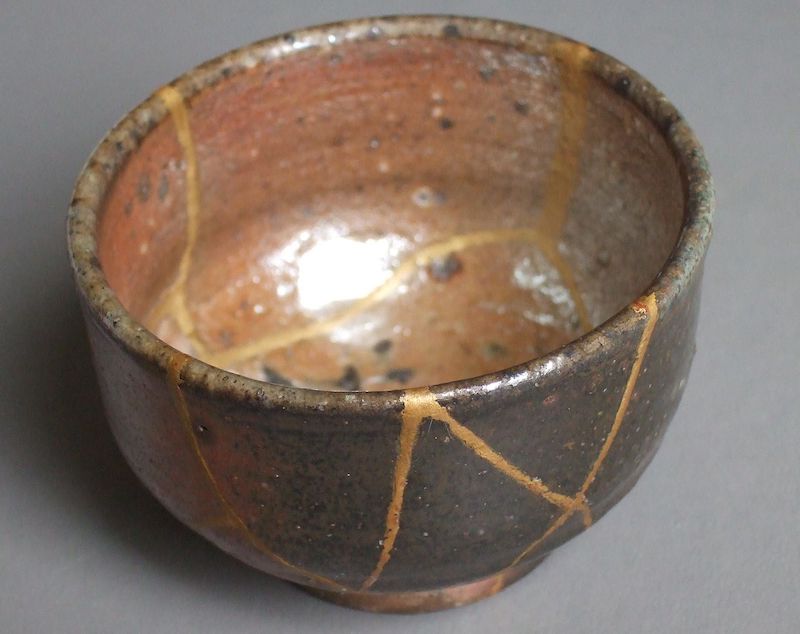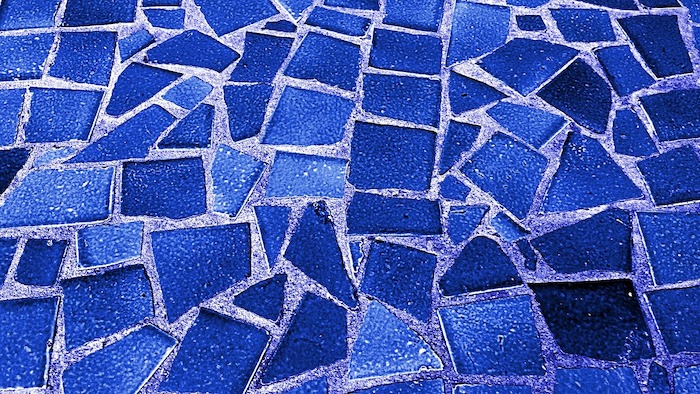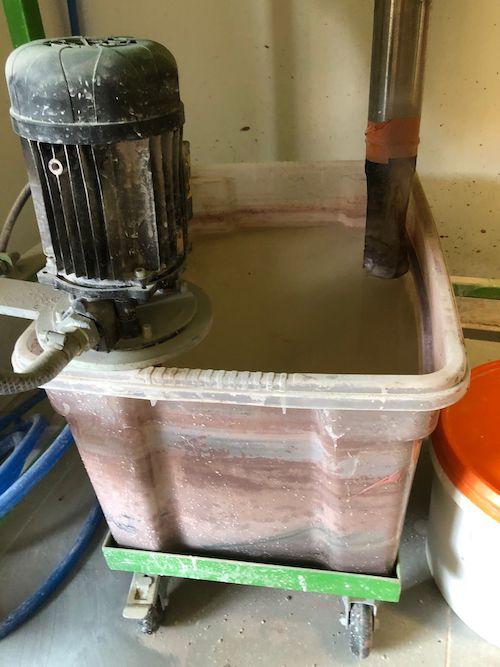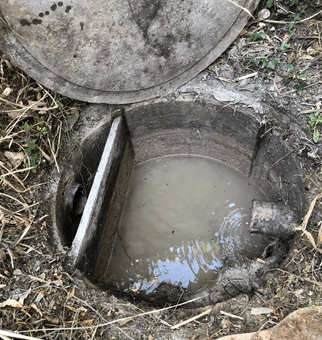Repair, reuse, or recycling: the second life of “failed” ceramics

Evaluation and sorting of ceramics
Repair and restoration of ceramics
Education and awareness raising
It is the fateful moment when you open the kiln and have to decide which pieces have failed. Don’t judge too quickly and read these tips. In 40 years of practice, I have seen many perfectly successful ceramics, but also many with defects which are a source of disappointment. But these pieces are far from being worthless. In this new article, we will explore what causes defects, how to evaluate and categorise them, as well as discuss their possible second lives. Whether they are repaired, reused or recycled, learn about all the possibilities with Créamik. By overcoming the initial disappointment, we will show you the potential failed pieces have and reveal their true value!
Causes of defects
Even after years of experience, potters still encounter defects. Let’s go over the main causes:
- Uneven drying: before firing, the piece must be properly dry. If one part dries faster than another, it can lead to cracking during firing.
- Uneven thickness: a piece without an even thickness may experience areas of tension leading to breakage or distortion during firing.
- Air bubbles: poorly wedged clay may contain air bubbles, which are revealed during firing. Bubbles can also be linked to a glaze problem.
- Wrong temperature: too high, too low or too rapid a rise in temperature can cause cracks, warping or other defects. Each type of clay has its own optimal temperature range.
- Incompatible glaze: not all glazes are compatible with all types of clay. Glazes can react differently depending on the clay on which they are applied, causing cracks, crazing, blistering, dripping, discoloration, etc.
- Repeated firings: if a piece is fired several times, adding layers of glazes – perhaps to correct a defect – is likely to create imperfections.
- Contamination: Impurities in the clay or glaze can cause stains or weak spots.
- Placement in the kiln: if the pieces are too close to each other, or placed in areas of the kiln where the firing atmosphere is uneven, the glaze will develop unexpected differences you may not like.
It is essential to understand the causes of defects to avoid future imperfections. Every flaw teaches us something, and over time we can adjust our techniques and materials to reduce the risk of imperfections and errors.
Evaluation and categorisation of ceramics

Whenever ceramics come out of the kiln with imperfections, they must be sorted to determine which ones can be repaired, reused or recycled. Here is a suggested system of analysis and classification:
- Visual examination:
Chips and cracks: These flaws are generally easy to spot. Their magnitude and position determine whether the piece can be repaired or whether it must be reused in another way.
Deformations: particularly when firing porcelain, a piece whose shape has been modified during throwing can return to its original shape during firing.
Glaze imperfections: stains, blisters, crazing, pinholes, crawling, etc. - Evaluation by touching: a pot may seem perfect to the eye, but when it is touched, it feels rough or uneven. Tap it lightly – with a finger or a small piece of wood. A clear sound will reveal a good solid pot, while a muffled sound may indicate an air bubble, crack, or underfiring.
- Classification of output
From these observations, we can divide the ceramic pieces we produce into these categories:
- Repairable pieces: these have minor defects which can be corrected, and the piece can regain its usefulness and remain attractive.
- Reusable pieces: they may not be restored to their original state but can be transformed into a mosaic or have other decorative uses.
- Educational pieces: ceramics with particularly interesting or unique defects can be kept for training or as a reminder.
- Recyclable pieces: if no other use is found, some unsuccessful pots can be ground down and incorporated into new clays or used for other projects.
Careful sorting is the key to giving a second life to defective ceramics. By recognizing the potential value behind each imperfection, potters can turn mistakes into opportunities. Each piece of work finds its place, even if it does not match up to your initial expectations.
Repair and restoration


Techniques like collage or Kintsugi (the Japanese art of repairing with gold) can restore the appearance and functionality of many pots. Restoring a work of art or a piece with sentimental value is an art in itself.
What are these repair techniques?
- Epoxy glue: excellent for clean breaks, epoxy glue offers strong adhesion. It is important to choose a glue that dries transparently to preserve the design. For more artful repairs, pigments matching the colour of the pot can be added to the glue.
- The art of Kintsugi: originating in Japan, Kintsugi is the art of repairing ceramics with lacquer and gold powder. Not only does this technique restore the functionality of the piece, but it also adds a unique beauty, celebrating imperfections. Through repair, Kintsugi celebrates the object’s history, rather than hiding it.
- Filling and sanding: for chips or rough areas, a special ceramic filling paste can be applied. Once dry, the area is sanded to ensure a smooth surface
- Re-firing: in some cases, pots can be re-fired to repair imperfections such as crawling or other glaze defects. However, with high-temperature glazes, it is advisable not to fire more than twice.
The decision to restore a piece of work depends on its value (sentimental, historical, monetary). The repair and restoration process is a reminder that broken objects can find new life and beauty with a little care and creativity. The restoration does not always seek to hide the damage but can instead highlight the flaws and testify to the piece’s resilience.
Creative reuse

Failed pots can be turned into mosaics, building materials, jewellery, or even musical instruments. Creativity has no limit!
- Mosaics: Whether decorating tables, picture frames, flowerpots or flooring, ceramic fragments can bring colour and character.
- Jewellery: Unique, beautifully glazed pieces can be transformed into pendants, earrings, or brooches. With a simple attachment, even a small shard can become an original accessory.
- Embossed artwork: Glue ceramic fragments onto a canvas or wood panel. By playing with shapes and colours, you can create landscapes, portraits, or abstract patterns.
- Plant stands: Larger, but imperfect, pieces can become staggered pots for plants or herbs. A small crack can even help with drainage.
- Fridge magnets: By attaching magnets to ceramic fragments, you can create unique adornments for a fridge, but also for a whiteboard.
- Knobs and handles: By turning pieces of ceramic into knobs or handles for drawers and cabinet doors, you can add a creative, artisanal touch to furniture.
- Coasters and trivets: flat, regular pieces can be used as coasters or trivets. Add felt pads underneath to protect surfaces.
- Garden decoration: You can incorporate pieces of pottery into garden paths, flowerbed edges or as decorative elements among plants.
- Decorative objects: Stack pieces to create abstract sculptures or cairns. Glued together, they can form interesting shapes.
- Musical instruments: Smaller ceramic fragments can be used to create maracas or rainsticks.
The idea behind creative reuse is to see beyond the flaws and imagine the artistic potential: beauty can be found in imperfection!
Education and awareness-raising

Failure and imperfection are an integral part of any learning process. They help apprentice potters to understand common mistakes and raise awareness of recycling.
- Educational tools: Failed pieces can serve as concrete examples to illustrate common errors, technical problems, or aesthetic challenges. By showing students these pieces, instructors can show where things went wrong, while also offering solutions.
- Acceptance of failure: Fear of failure can be a major obstacle to creativity. By integrating discussions about imperfections into their lessons, instructors can help apprentices accept that failure is a natural and essential stage of learning.
- Repair workshops: why not organize repair workshops from time to time? They would enable sharing skills while encouraging sustainability.
- Thematic exhibitions: a bit like the repair workshops idea, a thematic exhibition of imperfect ceramics can raise public awareness of the challenges the profession faces, while highlighting the beauty that can emerge from imperfections. This type of event can spark discussions about value, authenticity, aesthetics, etc.
- Documentaries and stories: previously, we talked about defects that form part of the history of a ceramic piece. We can present the creation of a piece as a journey, from its conception to its firing. Imperfections reveal a reality of the potter’s work. These stories can be shared in the form of blogs, videos, or articles, to educate and inspire other artists or amateurs.
- Environmental awareness workshops: Clay is a raw and very humble material. It is easy to access and inexhaustible. Yet it is also a limited resource, and using every bit, even those resulting from failure, is a great way to raise awareness about sustainability and the importance of reducing waste.
In summary, imperfect ceramics are not necessarily waste. With an understanding of the material and techniques, with an appreciation of the defect that firing will reveal and a creative touch, failed ceramics can be transformed and reused. We must not forget that what is an imperfection to one person may seem beautiful to another. Many professional potters sell their less than perfect pots as ‘seconds’ at a lower price.
Though a piece of work may initially look like a failure, with time you may come to appreciate it. Japanese potters sometimes create intentional flaws – the famous tea bowls can be far from ‘perfect,’ reminding us that perfection is transitory, and nothing is permanent.
Pottery, like life, offers opportunities even in imperfections. It is the duty of artists and artisans to recognize and exploit them. Through this article, we wanted to pay tribute to all pottery which is not perfect, but which retains within itself the beauty and creativity of its creator. Its reuse is not only ecological, but also a profound expression of art and culture.

Resource centre
animated by Matthieu Liévois,
potter-ceramist for over 40 years and founder of the Creamik School
Find all the courses
Keywords
Don’t miss any more news from the Créamik school!















